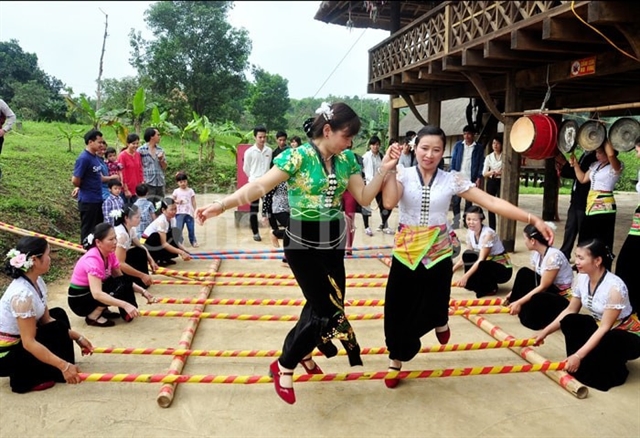 Life & Style
Life & Style

Hoàng Lan
Nông Thị Liên who lives in the northern province of Cao Bằng makes bánh tro (cake made of sticky rice soaked in ash water) for Tết Đoan Ngọ, or the fifth day of the lunar fifth month, festival which fall on June 22 this year.
In the morning, housewives often wake up very early to buy fruits such as litchi, plums and fermented sticky rice, and bánh tro, and put them on altar to offer to their ancestors, praying for a bumper crop, good luck and good health, said Liên.
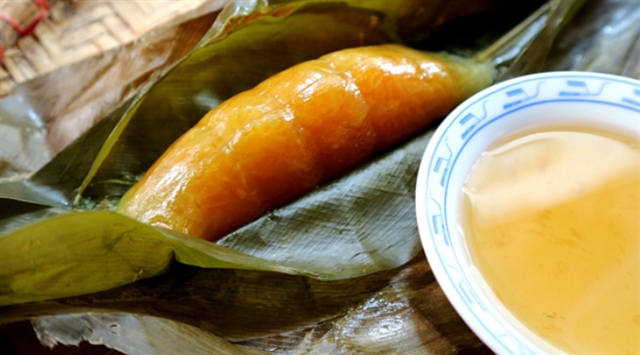 |
| TAKE A DIP: Northern housewives welcome the Đoan Ngọ Festival by making 'bánh tro' that are 20cm long, without filling, which is enjoyable when dipped in molasses. — Photo mediamart.vn |
“It is one of important festivals in the Vietnamese calendar, particularly for the Tày ethnic minority who believe the fruits and bánh tro help them to kill harmful worms and insects to prevent diseases,” Liên said.
Bánh tro (or bánh gio) is made of sticky rice and soacked in ash water (the ash comes from burning a number of leaves such as dried sesame or rice straw and is put in water), she said.
“I often choose special sticky rice for its natural fragrance and it goes soft when you soak it in ash water for 22-24 hours before wrapping it in banana leaves and steaming it,” the Tày woman said.
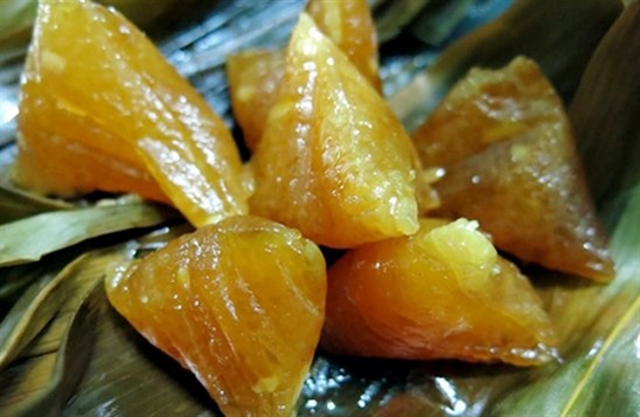 |
| GOOD POINT: Pyramid shaped 'bánh tro' is a specialty of the south. — Photo vov.vn |
Asked why almost Vietnamese eat bánh tro during the Đoan Ngọ festival, Liên explained that as the weather during the festival is often very hot, the cake helps people cool down and detox poison from inside body, and can act as a diuretic to help rid your body of salt and water.
Locals believe that Đoan Ngọ Festival is the very day that yang is at peak so insects proliferated too much, causing diseases so by eating fruits, fermented sticky rice and bánh tro would dispel all bad luck and ailments, Liên said.
According to traditional medicine, eating bánh tro helps to improve health as it is easy to digest and very suitable for elderly and children who have a fever, Liên said.
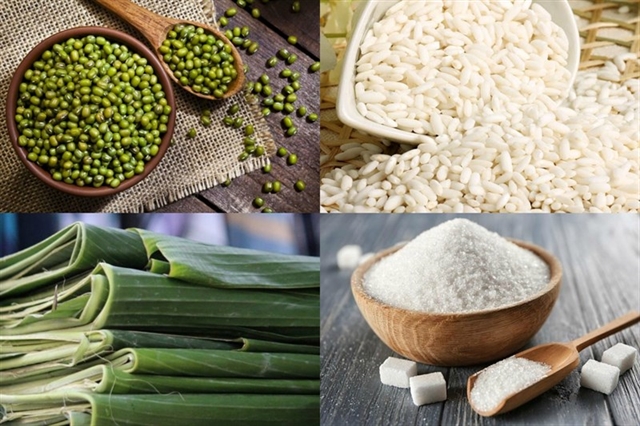 |
| MIX IT UP: Ingredients to make 'bánh tro', as it is called by northerners, include quality sticky rice, green beans and banana leaves. — Photo dienmayxanh.com |
The cake is more enjoyable when dipped it in molasses.
Different from bánh tro which is made in the form of 20cm long stick without filling by northerners, housewives in the south make it in a pyramid shape with green bean and sugar filling.
A HCM City resident, Hồ Thị Thái, said she has made one hundred of pyramid bánh tro with different fillings for her family, relatives and friends. She also made fermented purple sticky rice which has slightly alcoholic and sweet flavour.
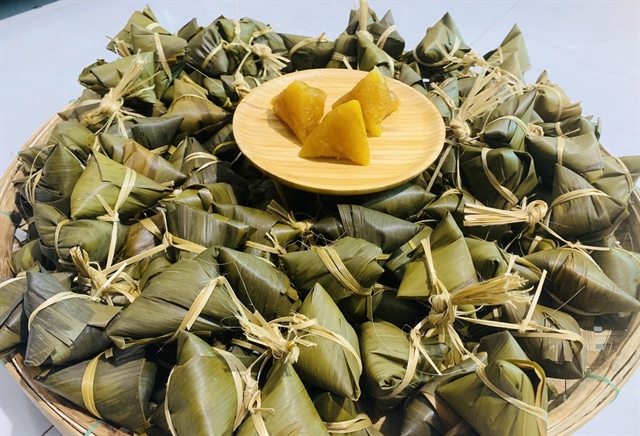 |
| TUCK IN: Pyramid-shaped 'bánh tro', made by chefs from the central province of Quảng Nam Province, is popular from far and wide. — Photo baoquangnam.vn |
People believed that fermented sticky rice will kill insects that cause harm for humans, she said, noting that this dish, although delicious, can be hot so eaters should not take it too much or take on an empty stomach.
Completely different from the north and the south, people in the central region have a habit of eating duck meat at the festival. This time, duck meat is very tasty without distinctive bad smell so it is enjoyable, said Thái.
They believed that the duck meat can dispel heat from your body, and it is very suitable on a hot day and can improve your health, she said . — VNS




